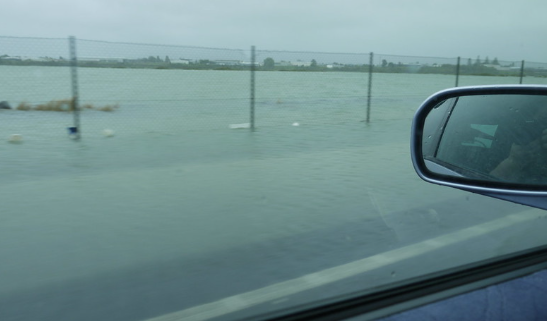How to work out if a property has flooded or is at risk of flooding
Prospective homeowners might have a new concern to factor into the search for their next purchase – the risk of flooding and whether a property has been flooded before. With that in mind, knowing where to find that information, along with a comprehensive property inspection, will equip you with the facts before you buy.
Read on to find out how to determine if a property has flooded or might be at risk of flooding in the next climate event.
Check the council files for property information
A property’s LIM report is a good place to start. In it, you can see if the house has been identified by council as being at risk to natural hazards, including flood.
A flood hazard means flood water will pool in low points, or water could be fast moving down a slope. If you are Auckland-based, the council has a Hazard Viewer – click on the ‘flooding’ tab to see if there is a flood hazard on, or near your property. Core Logic has an NZ floodmap for a full picture of the flood risks nationwide.
Things to look for at the property
1. The lay of the land
When you’re visiting the property take time to assess the lay of the land. Where is the house situated? Is it down in a valley or is it on a hill? Does it have a long driveway that runs down towards it? If yes, could this act as a path to funnel lots of water towards the property?
2. What’s around the property?
If there are neighbours, where are their houses in proximity to yours? Are their houses sitting above you and does yours end in a natural valley or low-point? Remember their stormwater, services, and run-off have to go somewhere.
3. What kind of foundations does it have?
Different eras of homes bring a variety of foundation construction. Is it a concrete slab or is it sitting on piles? – because each will operate differently during a flood event. Houses on piles are generally preferable in flood-prone areas because you’re higher off the ground. Plus it’s usually easier for your property inspector to access the space to look for any pooling of water, damp or damage. Tip: We’ve got comprehensive information about types of foundations on our website.
4. How’s the ground level around the house?
When a house is built low to the ground, e.g. on a concrete slab, or with little clearance from the earth, moisture ingress can cause havoc by wicking up into walls, causing damp, mouldy conditions. High moisture levels inside a home can be an indicator that the home is damp, even when water has drained away.
And don’t forget to check the exterior of the home for gardens, lawns or banks of dirt up around the exterior cladding – basically, anything up against the house that could become more saturated in heavy rain and hold moisture.
5. Check the groundwater controls
While most homes will have drainage such as stormwater and strip drains, they only work when they are clean and clear. Check for silt, leaves and other debris which might block them and stop water getting away from the property. Also note where the drains are in relation to the house – are they at the low points of the section or driveway? Is the driveway shaped to funnel water away from the dwelling or is it a likely gathering point in heavy rain? Does the lowest part of your section bypass the drain so water may pool having nowhere to go (and cause issues) further down?
6. Are the gutters and downpipes up to scratch?
Old, leaky gutters and downpipes might cause rainwater to spill out onto the section, adding to issues with water pooling when it’s teeming down.
7. Suss out the garage and internal walls
Garage floors are often concrete which is a good place to see any staining around the walls where water might have come in. On internal walls, if there’s been flooding or high moisture, there could be signs of mould or damage to carpets and cladding.

Image credit: Canva
It can be an expensive problem to fix
If a house has been in a flood, damage might have been repaired so it can be hard to work out if a property has suffered water issues and how serious it was. Remediation of issues in a flood- prone property can become very expensive. There are also things owners can do to mitigate future problems, such as changing the fall of a driveway, building retaining walls, adding more surface water controls and drainage – doable but costly!
With lots at stake around the purchase of any property, it pays to do plenty of due diligence with checking council files, and making sure you get a qualified property inspector on the case!
Get in touch to discuss a property inspection now – phone your friendly property professional Dane on +64 27 2939 808.








